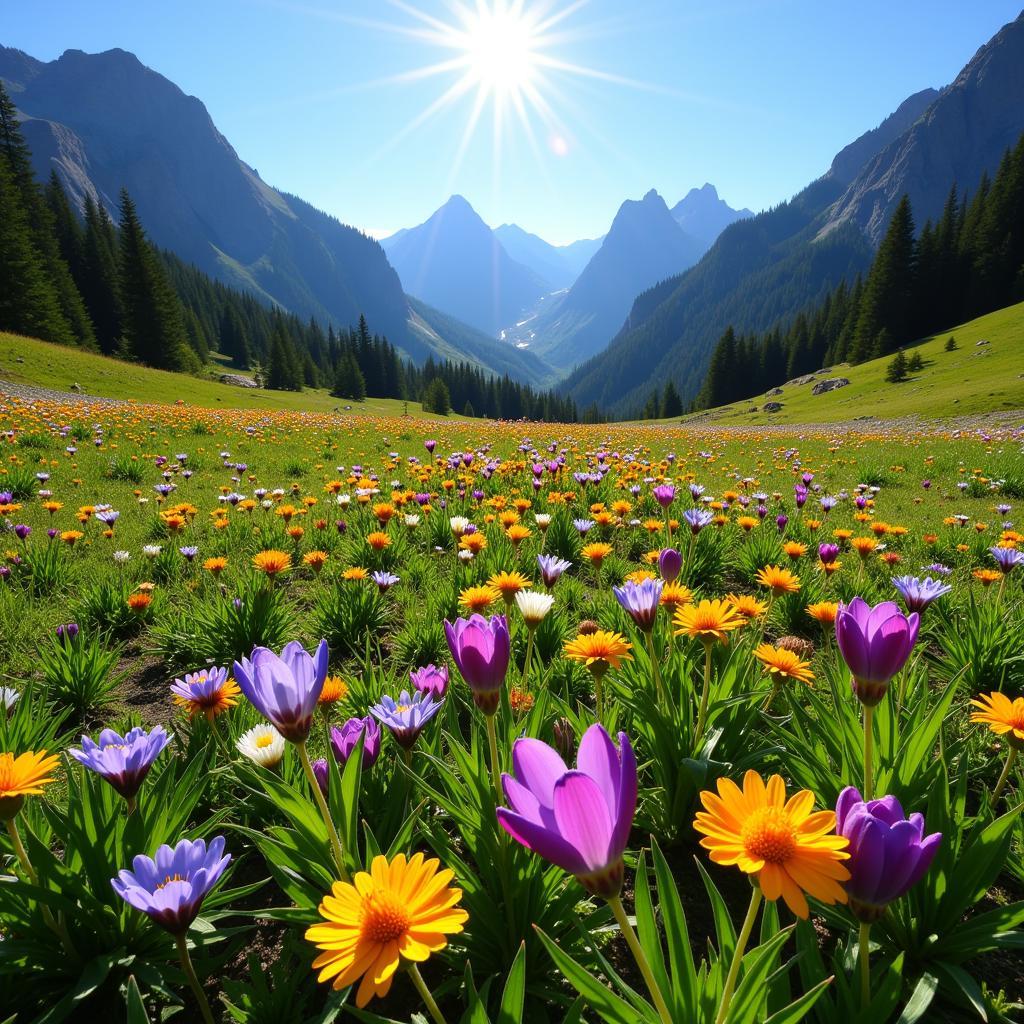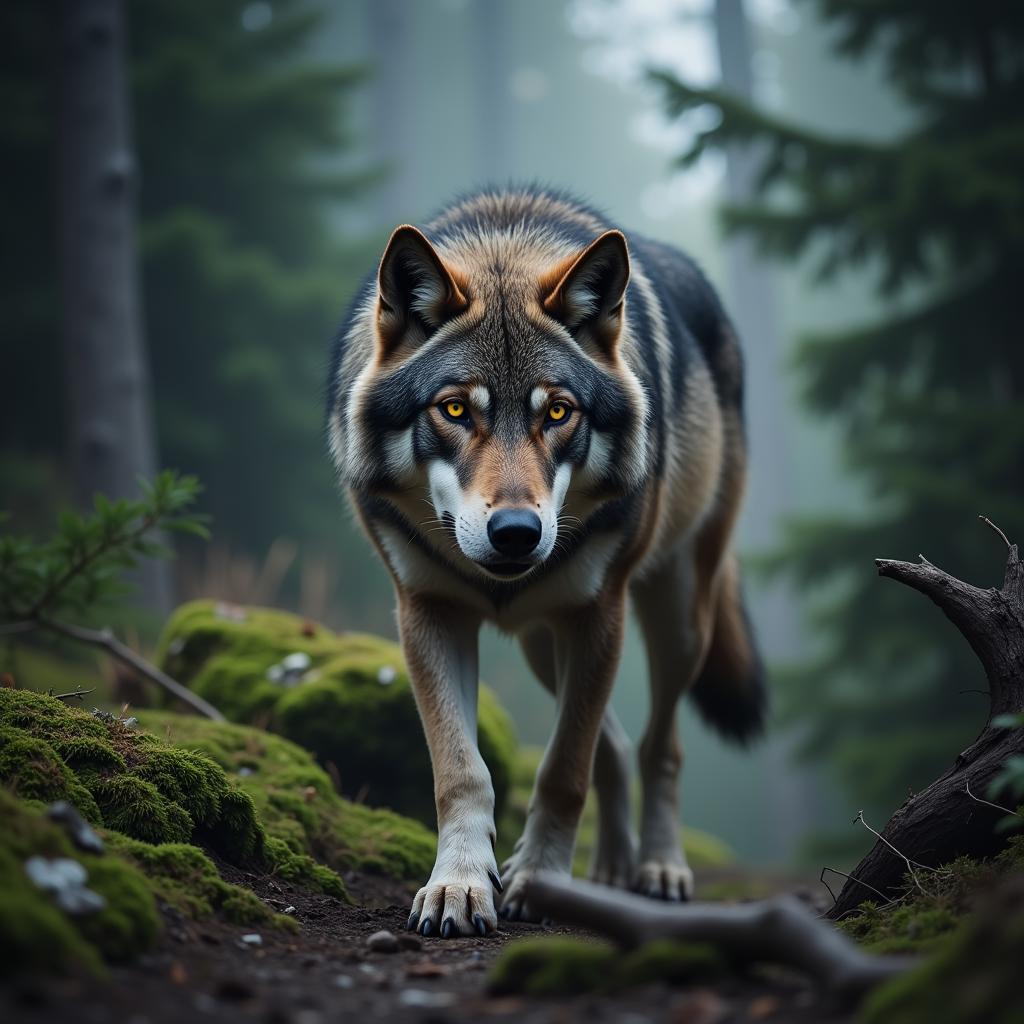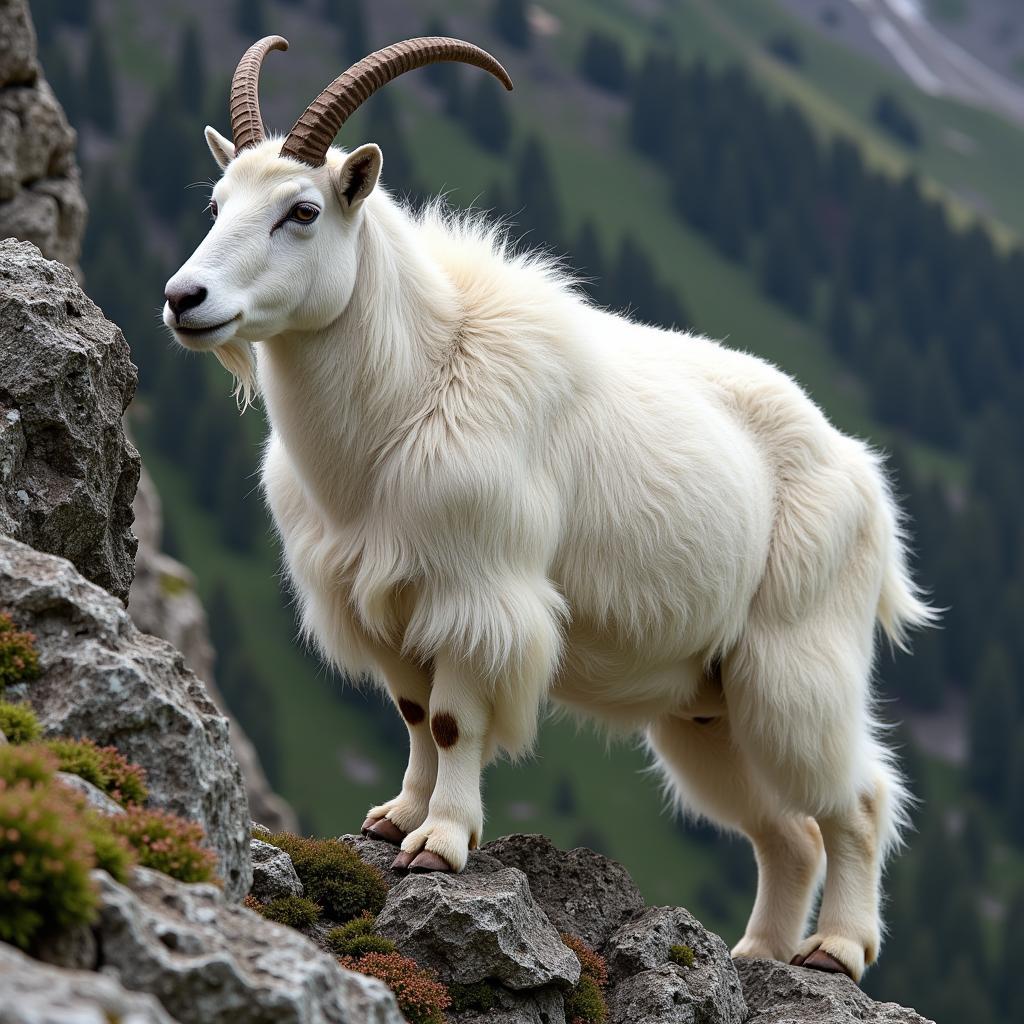The intricate tapestry of life in a mountain ecosystem is woven together by the threads of the Food Web Mountain. This complex network of interactions between producers, consumers, and decomposers dictates the flow of energy and nutrients, shaping the delicate balance of this unique environment.
From the tiniest insects to the majestic mountain lion, every organism plays a vital role in the food web. Understanding these connections allows us to appreciate the interconnectedness of life and the importance of preserving these fragile ecosystems.
A Delicate Balance: Producers, Consumers, and Decomposers
At the foundation of the food web mountain lie the producers. These are organisms like plants and algae that harness the sun’s energy through photosynthesis to create their own food. They form the base of the pyramid, providing sustenance for the entire ecosystem.
 Mountain Meadow Filled with Wildflowers
Mountain Meadow Filled with Wildflowers
Next come the consumers, a diverse group of organisms that obtain energy by consuming other organisms. Herbivores, such as deer and rabbits, graze on plants, while carnivores, like wolves and eagles, prey on other animals. Omnivores, including bears and humans, have a mixed diet, consuming both plants and animals.
 Grey Wolf on the Hunt in a Mountain Forest
Grey Wolf on the Hunt in a Mountain Forest
Finally, decomposers like bacteria and fungi break down dead organisms and waste products, returning essential nutrients to the soil. These nutrients then nourish the producers, completing the cycle of life.
Altitude’s Influence on the Food Web
As you ascend a mountain, the environment changes dramatically. Temperature decreases, oxygen levels thin, and the types of plants and animals present shift accordingly. This altitudinal zonation creates distinct ecological communities, each with its own unique food web.
For example, at lower elevations, you might find deer browsing on shrubs and grasses. As you climb higher, the vegetation becomes sparser, replaced by hardy alpine plants. Here, you might encounter mountain goats, adapted to graze on these tough, nutrient-poor plants.
 Mountain Goat Perched on a Steep Cliff
Mountain Goat Perched on a Steep Cliff
Human Impact on the Food Web Mountain
Human activities, such as habitat destruction, pollution, and climate change, can have far-reaching consequences for mountain food webs. These delicate ecosystems are particularly vulnerable to disruption, as even small changes can have cascading effects throughout the entire system.
For instance, the introduction of non-native species can upset the natural balance, outcompeting native species for resources or introducing diseases. Climate change is altering temperature and precipitation patterns, impacting plant growth and animal behavior.
Protecting Our Mountain Ecosystems
Preserving the intricate food web mountain is crucial for maintaining the health and biodiversity of these unique environments. By understanding the connections between organisms and the impact of human activities, we can make informed decisions that help protect these fragile ecosystems for generations to come.
Support for sustainable practices, responsible tourism, and conservation efforts are all essential steps in ensuring the long-term health of these vital mountain ecosystems.
FAQs about Food Webs in Mountain Environments
1. What is the role of scavengers in a mountain food web?
Scavengers, such as ravens and vultures, play a vital role by consuming carrion, preventing the spread of disease, and returning nutrients to the ecosystem.
2. How does climate change affect the food web mountain?
Climate change can alter plant growth patterns, impacting herbivore populations and subsequently affecting the entire food chain.
3. Why are mountain ecosystems considered fragile?
Mountain ecosystems are considered fragile due to their isolation, harsh environmental conditions, and the specialized adaptations of their inhabitants.
Explore More About Food and Culture
Interested in learning more about food and culture? Check out these related articles:
Remember, understanding the food web mountain is not just about appreciating the complexity of nature, it’s about recognizing our role in protecting these invaluable ecosystems.
Need assistance? Contact us at Phone Number: 02437655121, Email: minacones@gmail.com, or visit us at Address: 3PGH+8R9, ĐT70A, thôn Trung, Bắc Từ Liêm, Hà Nội, Việt Nam. Our customer service team is available 24/7.